By Stephen E. Drew, Chief Curator (retired) California State Railroad Museum
|
|
The self-propelled passenger car, or motor car, was the savior of early 20th-Century railroad branches and short lines, especially in Nevada. In place of a full-crew steam train carrying freight, passengers, baggage, mail and express, a motor car combined these into one economical vehicle operated by a crew of one or two — and could pull a passenger coach or a couple of freight cars besides.
Self-propelled passenger cars kept low-volume rail lines in operation, forestalling further service reductions or eventual abandonment. This three-part series takes a look at 28 passenger motor cars on ten Nevada railroads, emphasizing the state’s short lines and the surviving passenger motor-car collection at the Nevada State Railroad Museum.
Nevada Copper Belt Railroad
The name Fairbanks, Morse & Company of Chicago is synonymous with precision-built platform scales, hand presses, coffee grinders, water tanks, farm machinery, and car wheels. After acquiring the Sheffield Velocipede Car Company of Three Rivers, Michigan, F-M expanded into the burgeoning field of gasoline-engine track cars. Self-propelled passenger cars followed, with the Type 19 open car, the larger Type 23, and, in 1909, the Type 24 with wood carbody by J.G. Brill or G.C. Kuhlman. About 65 four-wheel, 50-horsepower cars had been sold when production ended in 1916.
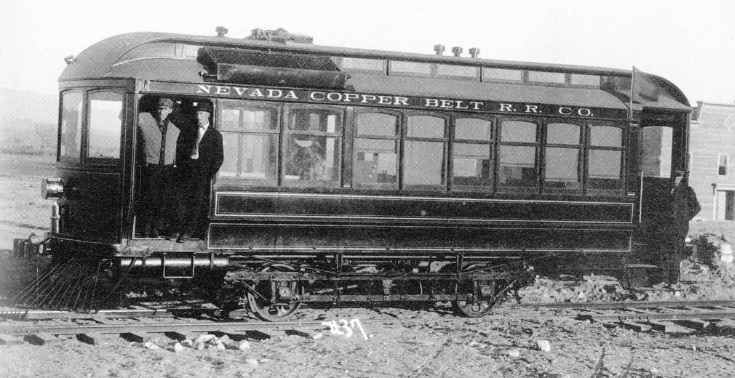
In 1909, the Copper Belt purchased its first gasoline motor car, a Model 24 F-M, for $8,055. As NCB No. 20, this car operated on the relatively flat 23.7 miles between Mason and Wabuska. The 34-foot, 12½-ton car seated 36 passengers. It operated daily until the volume of traffic exceeded its capacity and two larger cars were purchased. Stored in the enginehouse at Mason, No. 20 was destroyed in a disastrous November 1916 fire, along with 1891 Baldwin ten-wheeler No. 1.
Two motor cars built by the Hall-Scott Motor Car Company of West Berkeley, California, came to Nevada. Both were owned by the Copper Belt. Hall-Scott had been building motor cars for two years when the Nevada Copper Belt placed an order for its No. 21. Completed in November 1911 as H-S construction number five, the car had engine, baggage, smoking, and general passenger compartments. The wooden carbody was built by the Holman Car Company of San Francisco to Hall-Scott specifications. J. G. Brill Co. of Philadelphia manufactured the trucks.

The car’s six-cylinder Hall-Scott M-6 gasoline engine, with transmission on the rear truck, developed 150 horsepower at 600 rpm. The 54-foot, 36-ton car cost $14,635 f.o.b. Hall-Scott’s shops. It made the 337-mile trip from West Berkeley to Mason largely under its own power. Seating capacity of 69 was figured at three friendly passengers per seat on extra-long carseats, with an 18½-inch center aisle. The car entered revenue service December 1, 1911.
The Orem family of Salt Lake City were major NCB stockholders. Their Salt Lake & Utah Railroad was incorporated in October 1912. Following the success of NCB No. 21, the Orems ordered three new Hall-Scott motor cars that were to be the SL&U’s primary motive power and passenger equipment until the line electrified in July 1914.
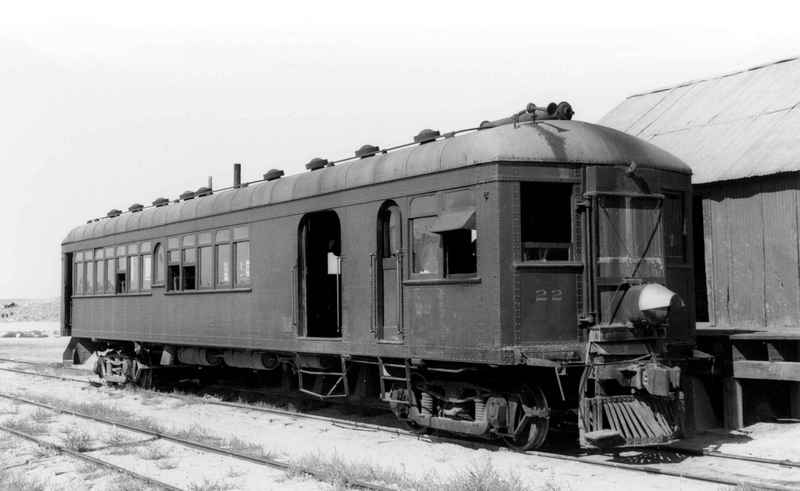
The H-S cars saw consistent use right up to the final years of the NCB. They pulled a boxcar or two over the relatively flat terrain between Wabuska and Mason when traffic and scheduling warranted. Near the short-line’s end in 1947, NCB crews seemed to favor more-modern steel car
No. 22. When Bay Area railroad enthusiasts chartered No. 22 for a sentimental photo trip over the line in October 1946, they were offered No. 21 and promptly purchased it. Restored, the car was presented in 1990 to the California State Railroad Museum, where, on occasion, it operates. No. 21 is believed to be the oldest operating passenger motor-car in North America with its original engine.
No. 22 had a less-glamorous end. When scrappers removed its trucks, engine, and seats in 1947, the carbody remained in Nevada, eventually becoming part of a plumbing-and-heating shop in Carson City. It came to the Nevada State Railroad Museum in 1996. NCB No. 22 was the subject of a 2008 restoration feasibility study commissioned by the Museum. Of 23 gasoline motor cars built by Hall-Scott between 1909 and 1921, NCB No. 22 is the only steel-shelled H-S motor car to survive.
Virginia & Truckee Railway
Like the NCB, the nearby Virginia & Truckee Railway also had three gasoline motor-cars: one of two McKeen cars owned by short lines in the state and two much-smaller White Company trucks with wooden carbodies. Between the two Whites came an interesting Ford touring car.
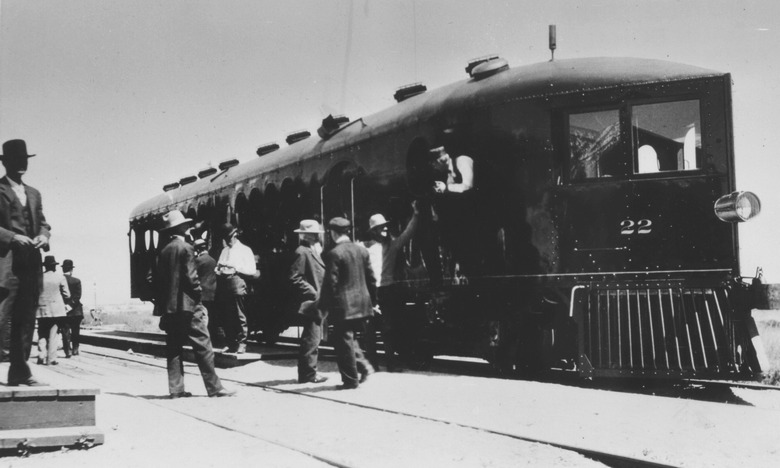
The dapper William R. McKeen, Jr. was the designer and aggressive salesman of his innovative steel gasoline motor cars. In his role as Superintendent of Motive Power and Machinery for the Union Pacific Railroad at Omaha, Nebraska, McKeen launched his first streamlined motor car in March 1905. The McKeen Motor Car Company opened in August 1908. The lightweight steel carbodies featured a distinctive styling: wind-splitter nose, rounded rear, and porthole-style windows. The gasoline engine pivoted with the forward truck. The cars were popular on branch lines throughout North America and as far away as Australia. In 15 years McKeen produced 160 motor cars, many trailers, several experimental locomotives, and a fleet of
lightweight steel freight cars.
Virginia & Truckee’s McKeen car became probably the longest running McKeen with its original six-cylinder engine. The 70-foot, 34-ton steel car had an 84-passenger capacity and was intended for service on the new 15.2 mile branch to Minden. With its purchase price of $22,000 and “modern” gasoline engine, the car was viewed as an economical two-man alternative to a full-crew steam train. Arriving at Carson City on May 9, 1910, it entered service between Carson City and Minden, and soon north to Reno. Often the car hauled a freight car or V&T’s small express-mail car. In 1932 the railway would modify the McKeen car itself for passenger, Railway Post Office, and express service.
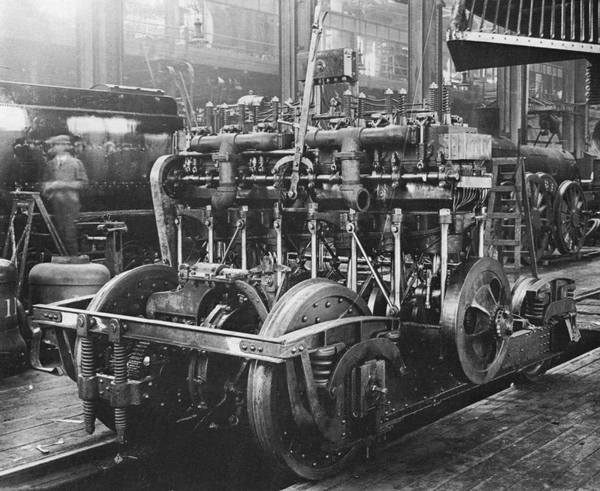
For eight years in the 1920s, longtime V&T engineer Grover C. Russell was the McKeen’s primary motorman. He said the car, which he called “The Big Red Devil,” was popular with passengers in its early years but that you had to be a machinist to operate it. Russell blamed his hearing loss on being the McKeen’s operator in its very resonant steel engine room.
After the McKeen Company closed in 1920, Union Pacific continued to supply replacement parts. By 1945, spare parts had not been available from McKeen or UP for seventeen years, and V&T’s car had the last operating McKeen engine in North America. The car’s last run occurred on a rainy Nevada Day in October 1945. The car had accumulated a remarkable 539,800 miles in its three-and-a-half decades of service. The V&T scrapped the engine, trucks and interior furnishings and sold the carbody for $1,000 for use as a diner in Carson City. Upon the 1946 sale of the carbody, V&T Master Mechanic Arnold Lee Gillie wrote in his shop notebook about the well-used motor car, “Made a restaurant out of it. Ought had been sold 30 yr. ago.”
By 1962, the McKeen and the carbody of NCB car No. 22 were incorporated into the Al’s Plumbing & Heating shop on Carson Street. In April 1996, the two were trucked to the Nevada State Railroad Museum. A restoration feasibility investigation completed in August 1997 kicked off what became the finest restored and only operating McKeen car in North America, if not the world.

The V&T’s second motor car was ordered from the White Company of Cleveland, Ohio. White manufactured sewing machines, roller skates, bicycles, lathes, and phonographs before entering the truck and internal-combustion-engine business. V&T gasoline motor car No. 23 had a body made by White subcontractor Thomson-Graf-Edler of San Francisco. The 25-passenger, wood-and- metal open bus body was mounted on a White Model GTB chassis. With a four-cylinder engine that developed 30 horsepower, the 16-foot car weighed two tons and cost $3,040. V&T Vice President Alexander M. Ardery acquired the car “to take the place of the motor car [No. 22] when required for small crowds.” After road testing by White on Southern Pacific track in San Francisco, V&T No. 23 arrived at Carson City on a flat car in July 1917 and was immediately placed in service.
The July 23, 1917 trip to Minden and Virginia City by the new motor car (nicknamed Canary for its bright-yellow finish) was documented by a short clip of nitrate motion-picture footage that still exists. The car saw use on all 67 miles of the V&T. It was converted for mail-express-baggage service In 1929, with its passenger capacity reduced to eight.

Next on the V&T motor-car roster came No. 24, a five-seat, four-door, four-cylinder 1923 Ford Model T touring car used for track inspections. The V&T converted the $302 rubber-tired, green-and-yellow automobile for rail service by means of a $145 kit from the Kalamazoo Railway Supply Company of Kalamazoo, Michigan. Unfortunately, the car’s operating career was limited to three years. After colliding with a truck near Browns station, it was retired January 10, 1927.
The V&T’s last passenger motor car No. 99, was a 1921 White Company product with a Thomson-Graf-Edler enclosed bus-body. The two-ton car seated 22 and produced 47½ horsepower. Built in 1921 for $8,150 as Tonopah & Goldfield Railroad No. 99, the car came to the V&T In 1926 with 14,000 miles on its odometer—for $3,400. V&T re-lettered the car, but retained its T&G number. Like the Canary, which it augmented, No. 99 operated anywhere on the V&T that traffic warranted. Its light weight, and a single operator made it economical to operate compared with a two-man crew on the much-larger McKeen. In 1932, the V&T converted the motor car for passenger-mail-express service. Soon in yellow-and-orange livery, No. 99 held down the Carson City to Virginia City assignment. The car racked up 80,955 miles on the V&T.
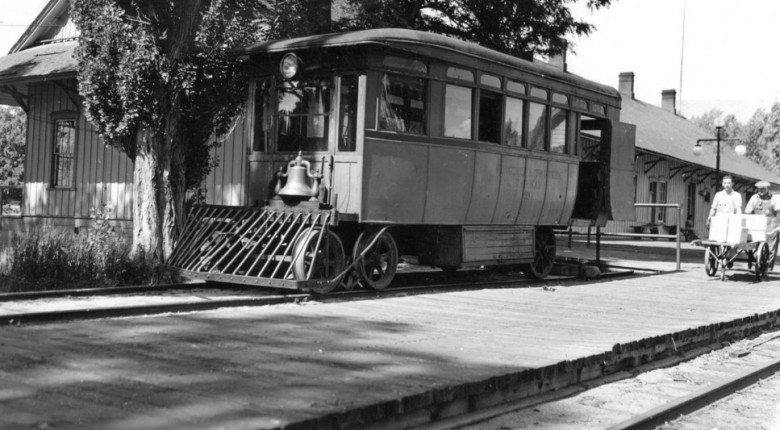
McKeen car No. 22 and mixed trains handled the Reno-Carson City-Minden traffic, and the Canary was not needed after the June 1938 closing of the 21-mile Carson City-Virginia City line. Stored in the Carson City enginehouse, Nos. 23 and 99 were retired in December 1941. No. 23 succumbed to World War II scrap drives, and no pieces survive.
Although No. 99’s engine and seats were scrapped, its chassis became a V&T maintenance-of-way trailer. About 1949 it too was scrapped. No. 99’s locally sold body was rediscovered in the 1960s in a shed in Virginia City. It sat in Sparks for more than a decade before coming to the Nevada State Railroad Museum. The museum commissioned a restoration feasibility assessment in 1982 and purchased several White chassis. Restoration prospects looked bright until an April 1985 wind storm demolished the carbody, leaving only a few fragments.
Railroad Motor Cars of Nevada – Part II Railroad Motor Cars of Nevada – Part III



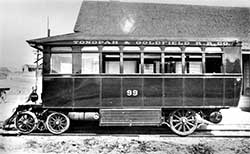
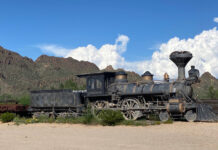
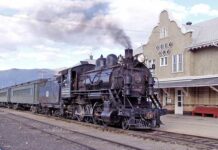

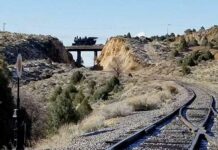
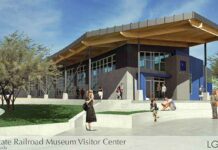
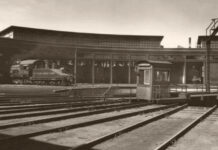






Excellent research Steve! Very enjoyable and informative article/